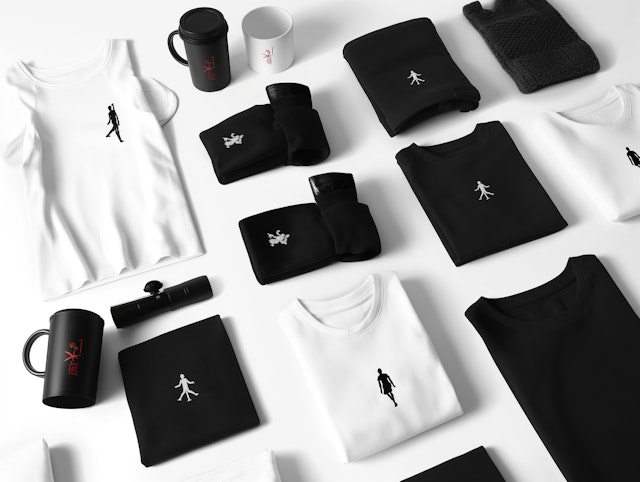How PleasureParadox got started
Introduce your Etsy shop and tell us your story. How did you begin and decide on what to sell on Etsy, and how do you create your products?
As I mention on my Etsy shop's About Us page, I started making leather products when I could not find one to fit the person I was playing with at the time, so I went to the local Tandem Leather Shop and bought some leather and some other parts and accessories and made a set that was functional. I then created a better set, and finally a third set that was both functional and attractive.Some other folks saw it and asked if I could make one for them. At that point, it was a typical start-up story.I was confident I could make them in the first place because my maternal grandfather had taught me basic leatherworking (along with woodworking and an introduction to welding).For trivia, my paternal grandfather taught me how to drive a tractor and some quality business skills. Both of them taught me to make a quality product as best I could and appreciate my customers whenever possible.
From there, I continued making products off and on in the last few years while I was in the military, and then after retiring, went on as a contractor for a total of 15 years, during which I took a year off and tried to make a go of it with my photography and leather working, which did not go so well that time, so I had to go back to a contracting gig for a few more years, but still continued making leather goods on the side. The contractor job did pay off most of my debts and get me solar panels (which have since paid off completely). When the contractor gig ended because of funding, I had started getting enough orders in to try again to make my leatherworking a retirement job, something to keep me engaged with the world and occasionally inspire me to be creative. At about the same time, I met my current live-in girlfriend, Tina, and it was she who suggested I try Etsy, which I am glad I did. I had been considering Amazon, but the rules were a little too strict at the time. Etsy is still easy enough to start with that it does not require as much effort to create a listing.
After that point, there was a slow, steady increase in sales as a few folks tried out my products, along with a few who had heard of my regular site, all creating a lot of word of mouth. Then, with good feedback, the number of sales increased over time, which obviously helped.Customers can see that I produce a good-quality product and have a good track record (even without the "star seller" stuff).
On a couple specific items:
My buckles and padlocks I sell for other crafters were for the padlocks because I wanted them available to go with my items; for the buckles, it was because I wanted to make sure I had the buckles in all of the colors and sizes I use, and as a result, I ended up having to special order them in relatively large quantities compared to the rate I go through them, so I decided to offer them so I could make some money back on the ones I might otherwise have to keep for decades at the rate I was and in some cases still are going.
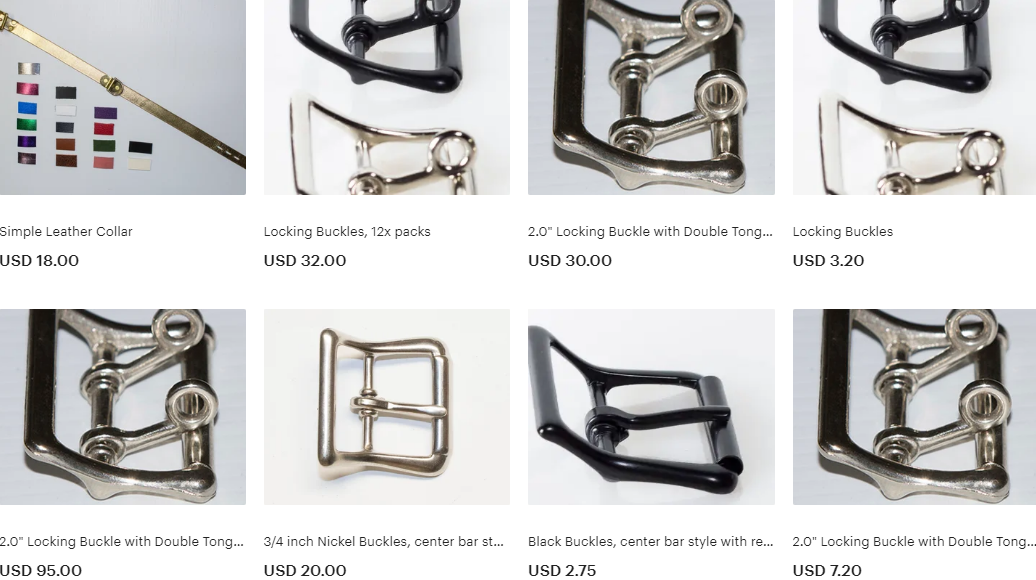
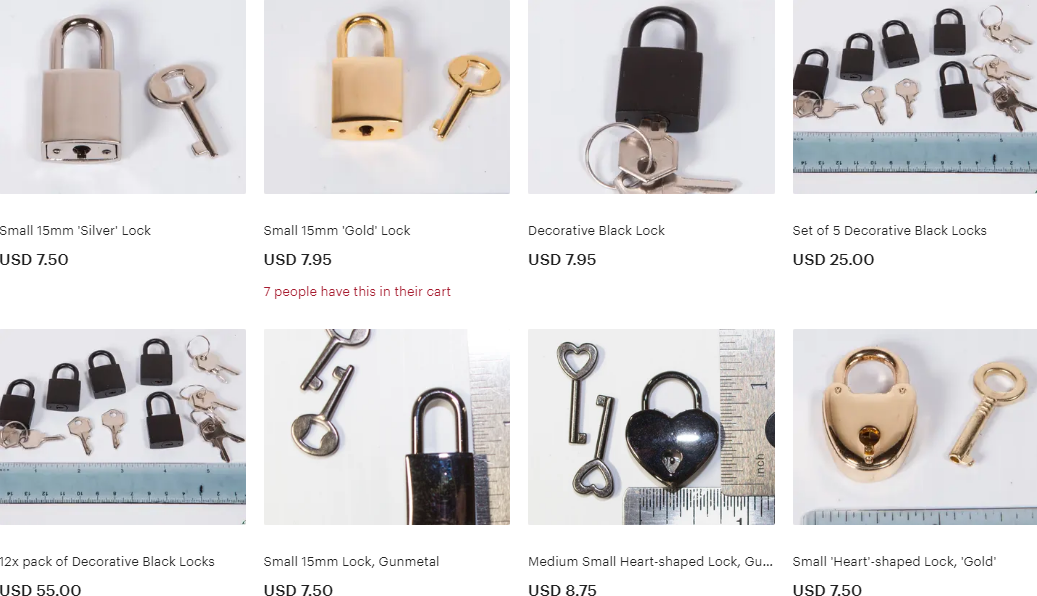
The panic snaps I sell are kind of a joke for me. I had some extras from a bulk order I made to save me some costs in making things, so I took some to an event and sold out of the few I took quickly, with some folks asking for more. I found that apparently they had been looking for them, and they were hard to find for them but easy to find for me (although there was a delay in getting a reorder during the height of the supply chain issues, which made me nervous). Fortunately, I had high enough reorder levels that I managed to keep those in stock.

And then, of course, my #1 selling item is ball gags (a mature product). That has a story in itself. I had been looking for a source that made a quality one we could resell when someone mentioned a source, so I ordered a couple; they were indeed of high quality at the time. I did not care for his straps; he sold them with them, but he was okay with selling just the balls, so I bought the balls from him and started making my own straps. Sadly, he passed away in his 40s; interestingly, he had let me know that was a possibility because his father and grandfather were also in their 40s. I had stocked up on a few extras, which eventually sufficed.I tried to get the molds from his widow if she was not going to continue making them, but she disappeared on me, so I went hunting for a new source. I had conversed with an Indian company, and they said they were medical grade silicone, but when I asked if they had latex, he kept repeating they were medical grade and not answering the important question given that 15% of the population is allergic to latex.

So I continued looking with the thought of doing it myself. I found a mold-making company in Massachusetts, and not only were they willing to make the molds, but they were willing to do production for me at the same price per ball as the first person had. So that was a winner. And as they were a medical parts company (at the time, Albright Technologies), the balls could be made with a medical-grade silicone material. The material we picked was actually slightly higher quality than the original source. This was in 2013. By late 2019, however, they had been bought out by another company, and prices started going up a lot.
So in early 2020, I started once again looking into doing it myself. I at least planned to do what I would call "gap fill," which was for me to make just the sizes I was short on and otherwise let them make the balls in numbers, so I got the minimum equipment I needed, which took a bit longer than expected because of COVID-related issues, and in June of 2020 I did my own first molding, which demonstrated I could do at least the same quality as they could. Within 2 weeks, however, the company that had been making them informed me that as of the end of the year (2020), they would no longer be supporting medium and low-rate production customers (which was me), but as I had the equipment now, it was not a serious problem. So I had them send my molds down to me, three of which were lost in transit. And I had found a local company (that did not exist in 2013) to make new molds as needed. They literally do parts for DoD and NASA, but they are local to me and like the challenge, and my relatively small projects can help fill the gap between bigger jobs. Thus, I now make the balls myself here in Newport News, Virginia, as needed to keep them stocked. I am able to create more colors at a lower price (not counting the price of silicone material itself, which has been climbing recently), and now in all sizes, likely 99.9% of what anyone could want. And for the most part, I think the quality of mine is at least equal to what the full-up medical parts company made, as my reject rate is close to equal to the reject rate of what I got from them after their QC process.
And then just adding a few items because multiple customers requested custom orders pretty much brings me to where I and the shop are today.
Favorite items
What are your favorite items? What makes these so special? Why do you think these items might be selling well?
My favorite items in the end are those that are custom made for someone, although there are times where I like doing the default items because I can do a lot of them in a batch fairly quickly. I am most proud of my ball gags and my Easy Wear cuffs, as they have a design that is somewhat unique and customers appreciate the quality. The Easy Wear cuffs are generally the most difficult for me to make and take the most time to put together, but when I get feedback that the customer likes them, it is worth it.
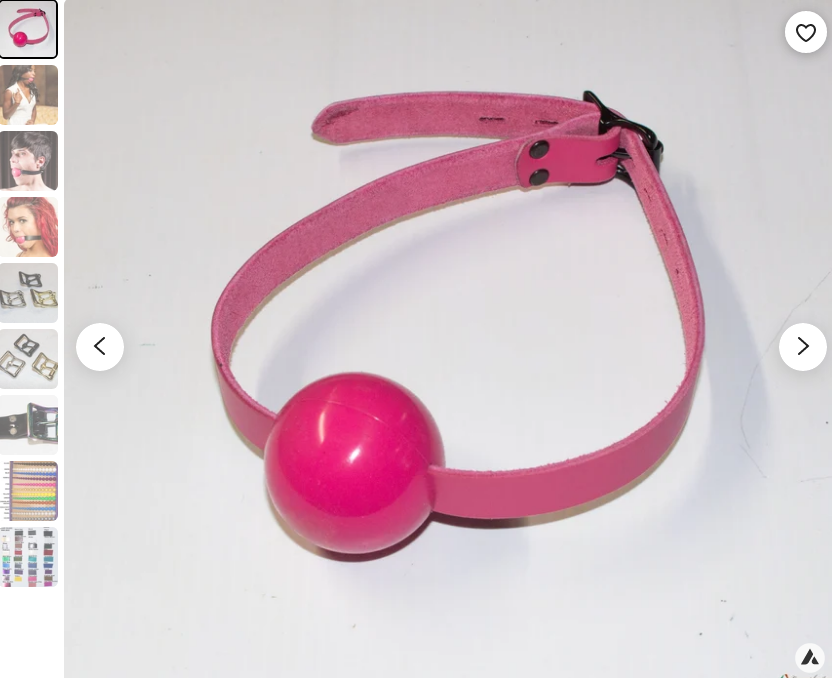
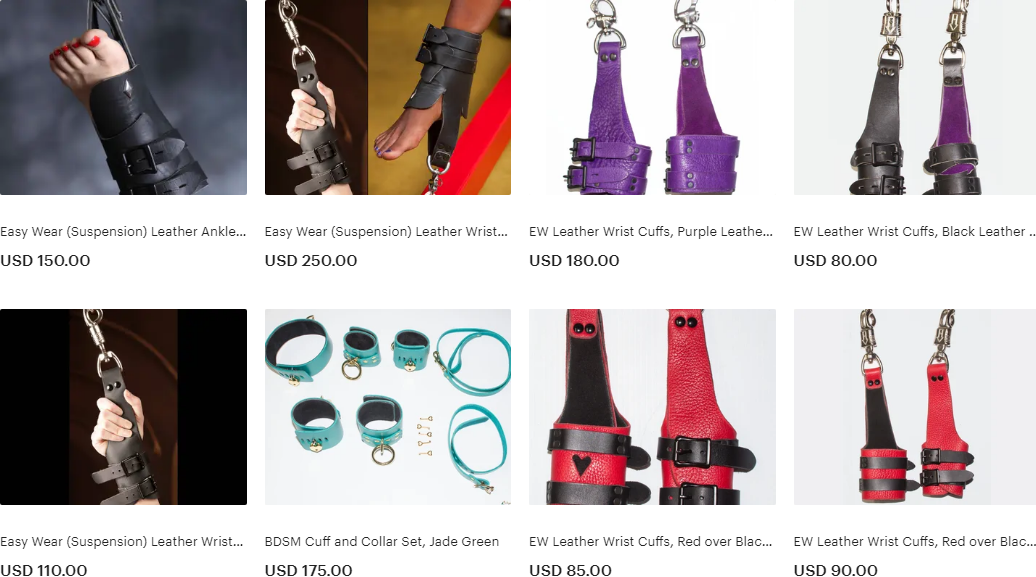
Getting sales on Etsy
How long did it take for you to earn your first sale and how do you currently attract customers to your Etsy shop?
From an overall perspective, pretty much any request to make some for someone else would be counted as my first sale. As for Etsy, I can’t remember exactly; however, I seem to remember selling two items the first month, one the second, and then another two the third, but then it all started picking up slowly from there. I had patience because I did Google Adwords at one point for my regular shop and got only one order per month the first three months, which was not worth the cost of the advert, but I made a couple of changes and held off for another three months, and things picked up a bit. I have since dropped Google Adwords as it was not helping much, and frankly, I get more business from Etsy and word of mouth than I do from the adwords listings on Google. My regular shop still shows up on Google, so at this point I don’t care. My Etsy version of my shop actually shows up on the first page for some searches, so I am happy about that.
Managing PleasureParadox
How do you manage your shop? Are you running solo or do you have any team members? What tools or services do you use to run your shop and how do you handle fulfillment?
It is 99% just me running the shop. I get occasional help from my girlfriend, but she doesn’t like the business portion of the shop. I do occasionally have her do stuff so she can back me up in an emergency, but otherwise it's all me. Other than Etsy itself, I primarily use an open-office spreadsheet program to manage my shop. And of course, I have Photoshop for correcting and cropping the images I take for my listings. I will edit models, but I never edit my products in the shots, although I do correct for color and exposure.
The future of PleasureParadox
What goals do you have for your shop in the future?
My goal is mostly to keep going at about the level I am now, as this is a retirement gig to keep me busy and earn me a little spending money. If I get too busy, I may have to hire some help.
Advice for new sellers
What’s your advice for a new seller starting an Etsy shop?
My first piece of advice to a new seller is to try to offer something no one else does, followed by lots of patience, both with time and with customers. If what you are making and selling is in a similar category to others', try to identify what aspects of your creations are unique. Try to emphasize that in the primary image for the listing.
Some sellers really get inspired by hearing numbers. Feel free to share these if you like.
Question: How much is your monthly revenue?
Answer: I make between $3,000 and $5,000 per month on average (gross) from Etsy, plus another $1000 from my regular shop. Of note, I average only 4 hours per day, 5 days a week (although I sometimes work weekends).
Question: What is your average profit margin?
Answer: Between 40 and 50 percent is net profit overall, but it highly depends on which item; for some I am making 80 percent, for others only 10 to 20 percent (usually the pricey items that are easy to make).
Question: What is your shop’s conversion rate?
Answer: I'm not sure what the formal conversion rate is; all I know is that word of mouth is bringing in enough business, and Etsy is doing the marketing for me.







